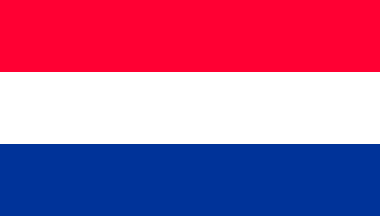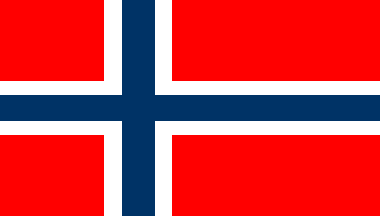
Photographing the aurora can be catagorised as an extreme sport. Photo-technically it is difficult because of the poor light conditions during the night. And physically, aurora photographers and their camera equipment can be exposed to extreme cold temperatures with inland temperatures around -20 degrees Celcius or colder. For people that don't live in the arctic and have to travel from far to see and photograph the northern lights, it is important to be prepared with instructions and tips that will help you being successful in photographing the aurora. The instructions below will be sufficient to make a good start on aurora photography. Good luck!
A tripod is a must. You simply can't take sharp photos without a tripod as long exposure times are required in aurora photography. Any kind of camera will do the job; analogue camera, pocket camera and DSLR. You don't need to use a remote control.
Recommended camera equipment should have manual settings so that the exposure time, diafragma and ASA/ISO can be manually adjusted. A wide-angle lens of 35mm or wider is recommended, and a lens with a diafragma of F2.8 or larger (smaller F-number) is required.
Using an analogue camera, a sensitive film of about 800 ASA is required. Faster films, with higher ASA, will increase chromatic noise in your photos. Put your camera on manual settings and do use an exposure time between 15 to 25 seconds. The amount of exposure time and ISO for digital camera's strongly depends on the sensitivity of the camera sensor and the type of lens that you are using. In general, ISO values to use can vary between 400 and 1600 ISO. Exposure times can be used between 15 and 25 seconds. Exposure times longer than 25 seconds is not recommended as star trails will become visible.
Important for both analogue -and digital camera's is to use a diafragma of F2.8 or larger (smaller F-number). The new generations DSLR camera's do have increasing sensitivity. This makes the use of high ISO values possible, up to 1600 ISO and higher, without getting chromatic noise in your photos. By using high ISO the exposure time can be reduced while keeping the brightness and colours in your photos. The advantage of this is that shorter exposure times do better express the distinct colours and structures of the northern lights, especially, when they are moving fast in the sky. With long exposure times these distinct colours and structures tend to disappear as they do blend and merge into eachother.
The type and quality of the lens is very important for the quality of your photos. You can compare this with a sound installation: you can have a very expensive sound installation, but the quality of the sound does not come out when you have crappy speakers. The same principle counts for the quality of your photos: a more expensive lens in the professional segment often does result in better quality of your photos than when using a lens from the cheaper segment. You will see this difference in the amount or the lack of barrel distortion at the edges of your photos, in the visibility of the stars in the sky, in the colours and sharpness of the shapes/structures of the northern light, and in the contrast and detail between the landscape in the foreground and the northern lights dancing in the sky above.
Most aurora photographers do use a lens with a diafragma of F2.8 or faster. A slow lens with F3.5 is not recommended as your photos will be too dark and it will reduce the visibility of the colours of the northern lights and the stars in the backround. A lens with diafragma of F1.4 is most recommended and will result in a lot more light, contrast and detail in your photos. The restriction for many aurora photographers however, is that a wide-angle prime lens with diafragma of F1.4 is not cheap. Especially, in the professional segment such a lens can cost more than a professional camera body.
Planning a photo trip involves the prediction of aurora activity as well as the weather predictions. The aurora activity predictions can be found at: http://www.spaceweather.com. This website gives a close to real-time prediction and a 24 hours prediction of the aurora activity. The weather prediction at: http://www.yr.no is important as the northern lights are only visible with a clear (cloudless) sky. If there is a clear sky and the K-index of the aurora activity prediction indicates 2 to 3, then it is time to be outside.
Knowing good locations for photographing the northern lights is another essential element. The locations need to be at a distance away from the city lights where the atmosphere is dark at night. A wide view towards the north is in the direction where most of the northern light displays take place. However, when the aurora activity is very high, the northern light displays can be right above your head or even flip over towards the south.
Even though the northern lights never look the same, for the diversity of the photos it is important to keep on finding new photo locations with different sceneries. When planning an aurora-hunt, the choice of the scenery for that evening depends on different factors, e.g. the predicted activity of the aurora and other factors such as the visibility of the moon. For instance, when the aurora predictions are quiet to moderate, an old little church in the foreground of the photo with the northern lights dancing behind it in the sky can give nice pictures. In this case the church adds that extra dimension to the whole scenery, making it a unique northern light photo. Another day when there is a full moon in the sky, it can be a good opportunity to drive to a location with a view over a fjord. The combination of the aurora and the full moon in the sky, as well as the aurora and the moonlight reflecting in the seawater can make it into a special photo and so different from other aurora photos taken at other locations.
- Bring spare batteries and do keep them in a warm place, like inside your car or inside your pocket. The cold temperatures will suck your batteries empty in a short time.
- Bring spare film or memory cards.
- Shoot in RAW mode.
- Try to experiment with different exposure times and ISO and see what works out the best for you.
- Do not use UV-filter or any other filter in front of your lens. This will create concentric rings in your image, called Newton's Rings. These concentric rings are a result of interference of light between the glass of your lens and the glass of the filter in front of the lens.
- Try to include the scenery of the landscape in your photos. The scenery of the landscape adds that extra to your aurora photo what makes it special.
- Turn off 'noise reduction' in your camera settings. You don't need noise reduction as this is more for astro-photographers. If this function is on, each time that you take a photo your camera will automatically create a dark frame which will cost you an extra exposure time.
- Bring a headlight. You might need this light if you need to change your camera settings in the dark.
- Check that your lens is in focus. If you work with a prime lens, turn it on infinite. You can ruin an entire evening of taking photos if your lens is out of focus. However, some lenses, and even lenses in the more expensive segment, have the problem that you turn them out of focus when you turn the lens to infinite. The result is that the stars in your photos don't look sharp. And it can even happen that the stars in your photos don't look like sharp tiny white dots, but that they look as donuts! The point of focus in this case lies a little bit before the infinite sign as marked on your lens. The solution is as follows: to get the lens in focus you must find this point of focus by trial and error. How to solve this, you put a piece of tape on your lens and mark it with stripes by using a blue or black pen. Then you start to take a series of photos and turn your focus ring one stripe further each time that you take a new photo. After having shot the photo sequence you start the selection process of the photos that are out of focus and the single photo that is in focus. This photo that is in focus does correspond to one single stripe on your tape. Mark this stripe by a red pen and do leave the tape on the focus ring. Now you can easily find the right focus.
- Warm clothing is a must. Don't use cotton as first layer of clothing. Cotton takes up and holds the body transpiration which is not good in freezing conditions. Use different layers of clothing and a warm coat with a hat attached. Do use warm undertrousers, gloves, thick socks and warm boots. Always bring enough protecting clothes with you so that you can cover all bare skin. Do bring ski glasses for protecting your eyes against the extreme cold.
- Chemically activated hand -and foot warmers should be standard equipment.
- If you don't want to shorten the lifetime of your camera you do have to avoid condensation. You can compare it with taking a beer bottle out of the fridge, the outside of the beer bottle gets wet as it condensates. The same thing can happen to your camera from the inside when you take it from the freezing cold temperatures outside into a warm car and later into a warm room. So, after an aurora hunt, wrap your camera in a towel and put it in a cold bag before you take it into your car. Back at home do keep your camera in your bag until the other day so that your camera slowly can adjust to room temperature.
- It is good to have a warm car close-by, so that you can seek shelter against the cold outside temperatures during the periods that the aurora activity is low.
For personal tips and advice please don't hesitate to contact me.




